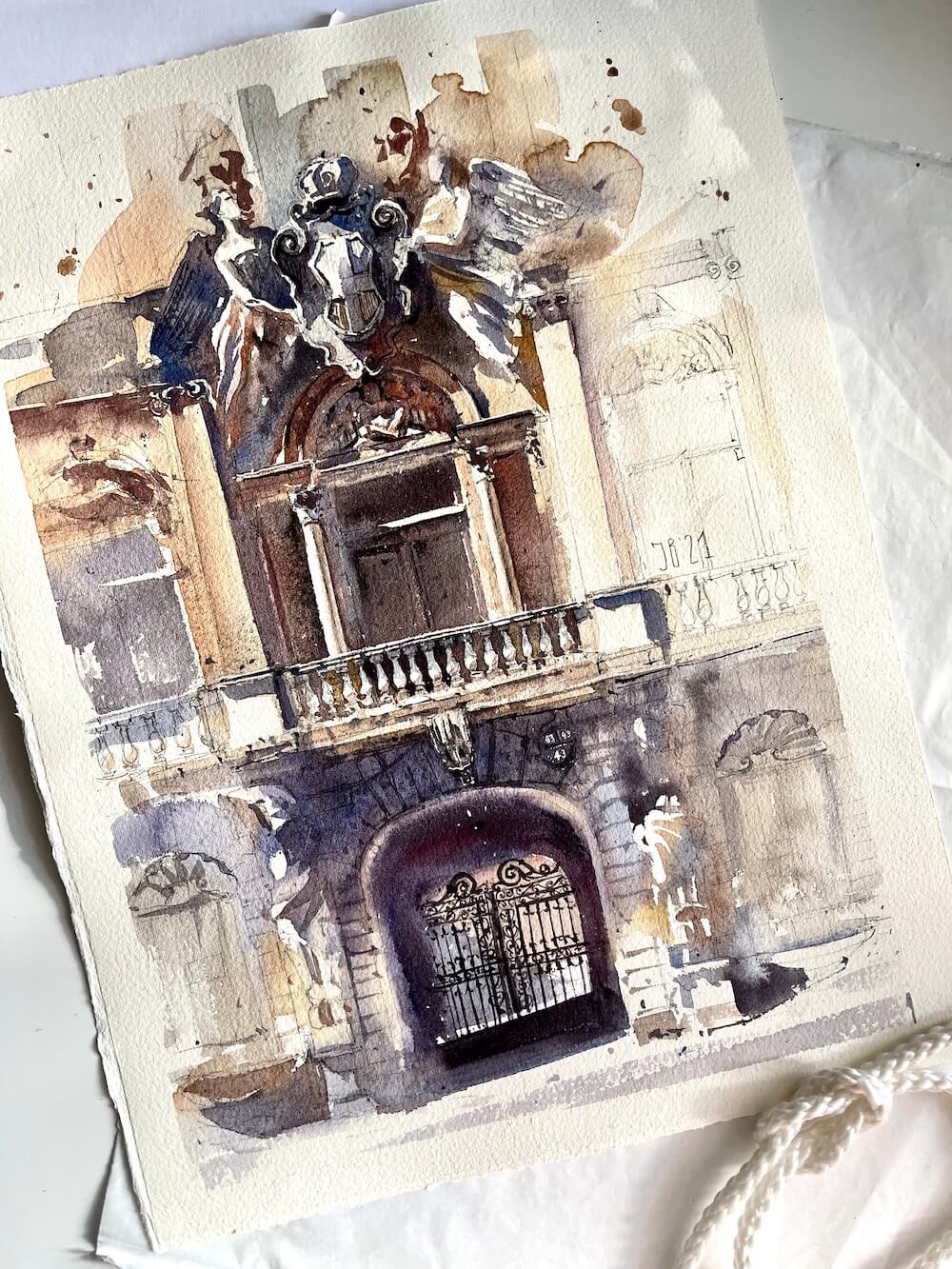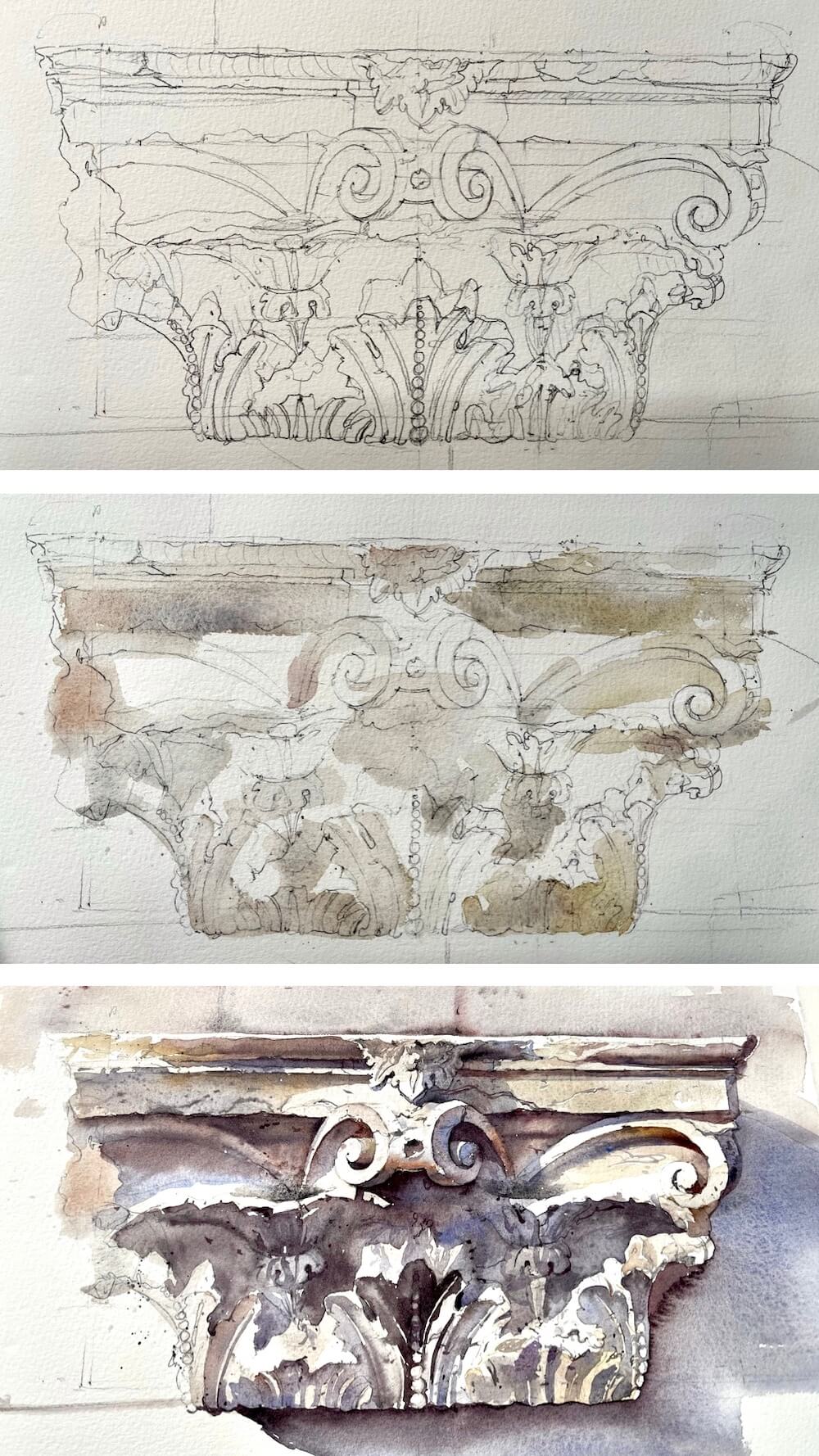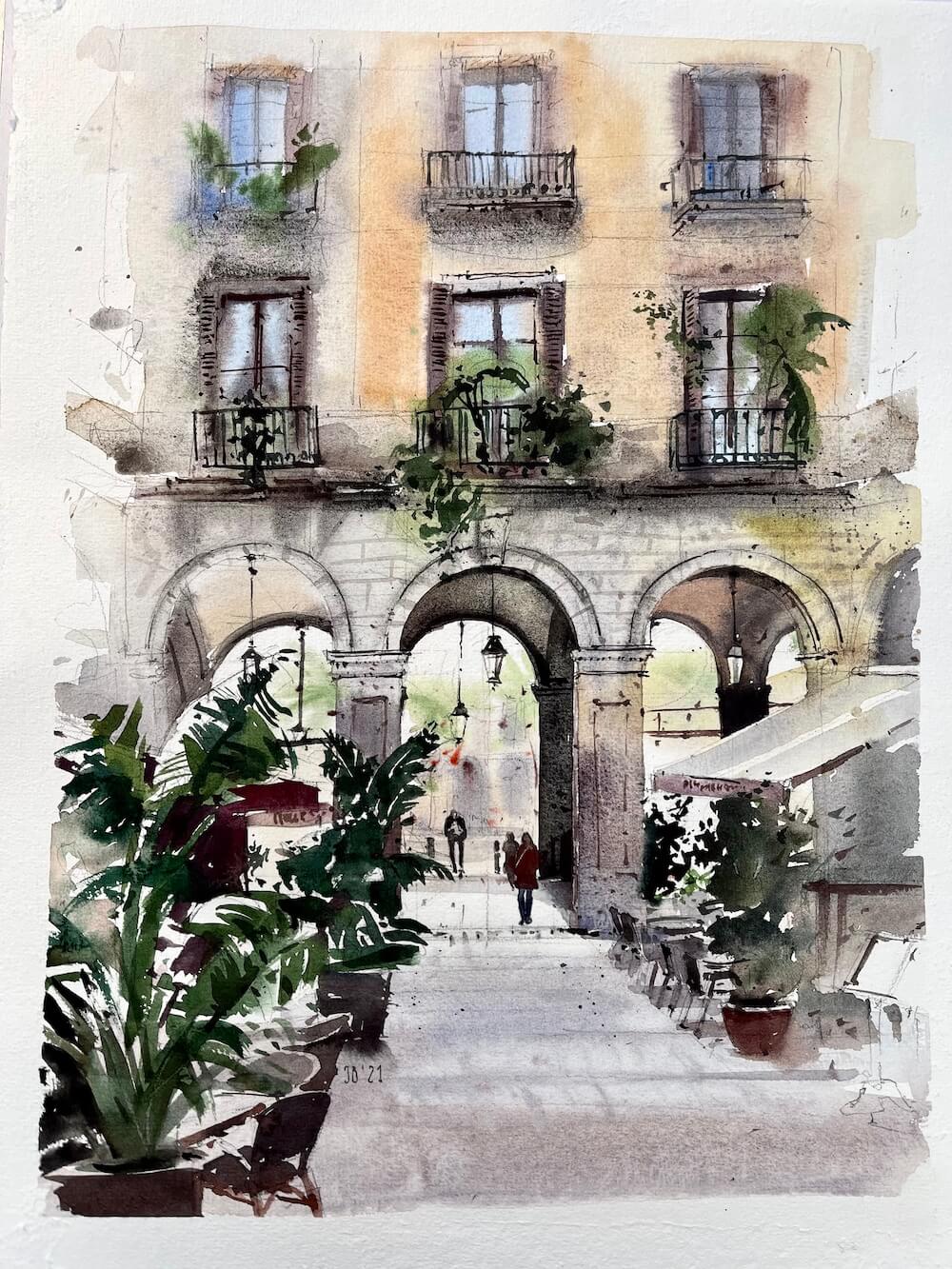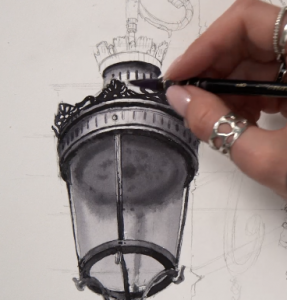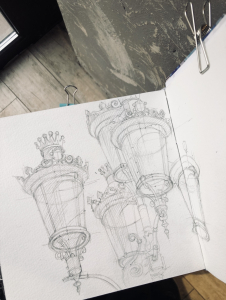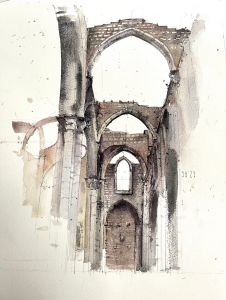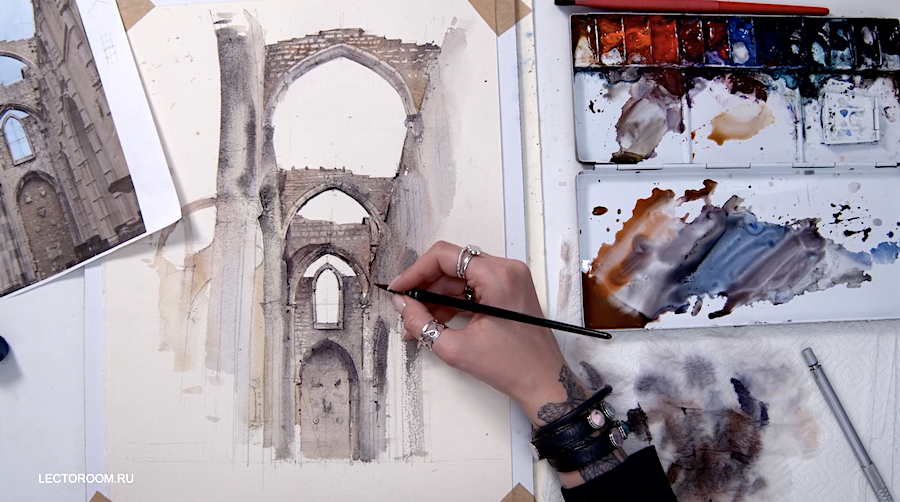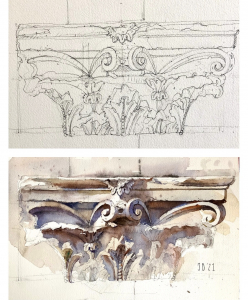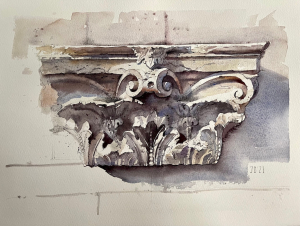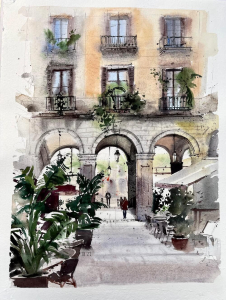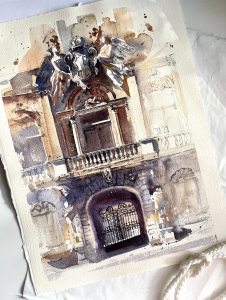About
English and Spanish subtitles are available
From a simple lantern element to a complex building facade
with contrasting sunlight.
Architectural painting relies on two skills: academic drawing and watercolor technique.
In the course you will be able to deal consistently with drawing and watercolor right from the architectural details. From exercises to final drawings, everything will be full of life: these are not plaster staging, but real capitals touched by time, textures of dried plaster from city streets, lanterns, not cubes, cones and pyramids.
Classical academic drawing for architectural forms is exactly the foundation that gives the aquarelle artist the confidence to build city streets, house facades, architectural elements, ships, yachts, bicycles.
After drawing, we will add watercolor techniques to our instruction: the proper use of color to create, for example, sunlight, quick sketch subjects, and slow studio work

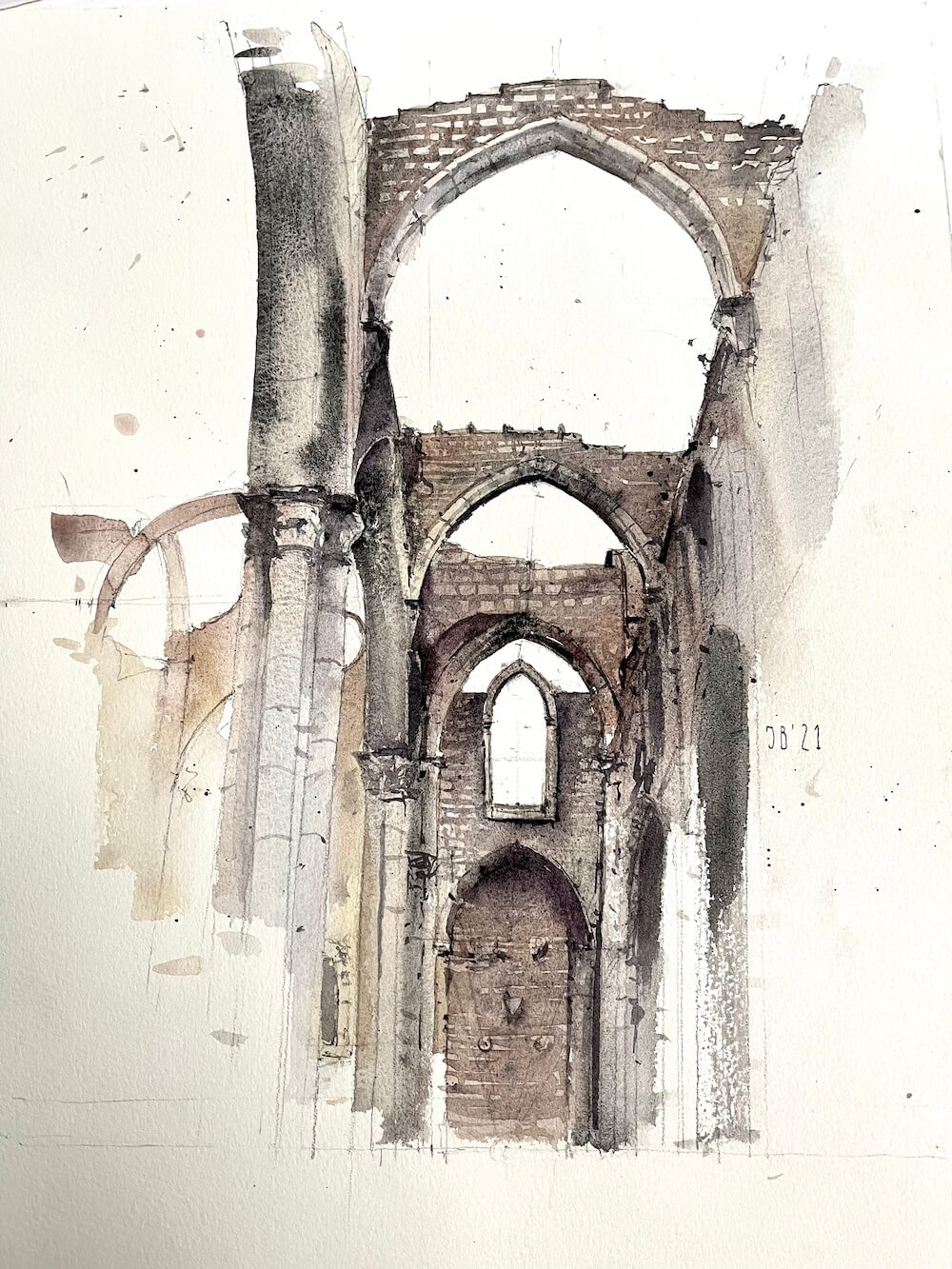
.jpg)
